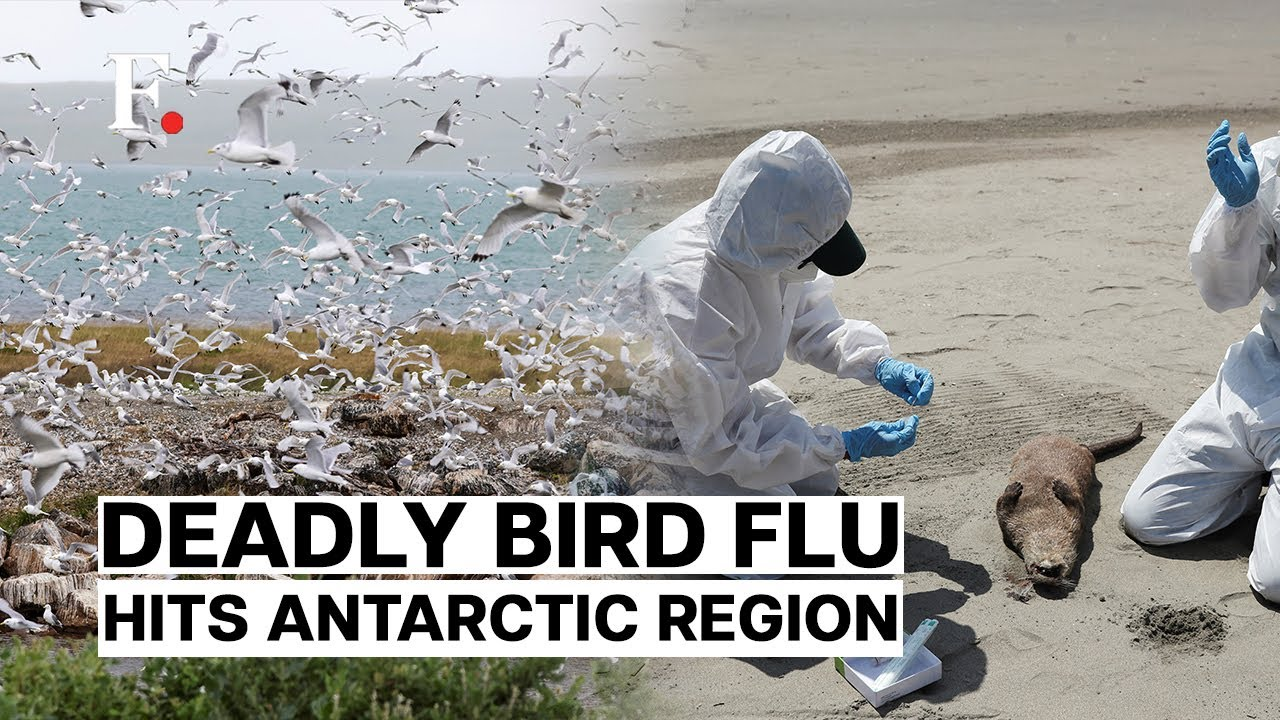





Copyright infringement not intended
Picture Courtesy: Firstpost
Context: The detection of Highly Pathogenic Avian Influenza (HPAI) in the Antarctic region is a concerning development.
Key Highlights
|
First Known Case in Antarctica |
●This is the first known case of HPAI in the Antarctic region, specifically on Bird Island, South Georgia. ●The presence of the virus in this remote area raises concerns for local wildlife, particularly penguins and seals. Given their limited exposure to such diseases in the past, the introduction of HPAI could lead to a rapid spread and devastating impact on these populations. ●Preserving the health of these species is critical not only for their survival but also for maintaining the delicate balance of the entire Antarctic ecosystem. |
|
Source of the Virus |
●The researchers suggest that the virus may have reached the Antarctic region from South America. This is consistent with the pattern of the virus's spread, with reports of outbreaks in South America in 2022 and 2023. |
|
Impact on Wildlife |
●Avian influenza, especially the H5 and H7 strains, primarily affect birds and can be highly pathogenic. ●The virus can cause high mortality in wild bird populations and it is known to spread among birds and mammals. ●The researchers have identified vulnerable wildlife groups, including gulls, skuas, birds of prey, terns, shorebirds, fur seals, sea lions, southern elephant seals, and dolphins. |
|
Global Concern |
●The global concern is that HPAI, if not contained, can lead to a decline in breeding populations of fragile wildlife in the Antarctic and sub-Antarctic regions. ●The virus can be transmitted through predators and scavengers feeding on infected birds, which could lead to its spread among different species. |
|
Rapid Spread |
●The virus has demonstrated rapid spread in South America, impacting seabirds and marine mammals, causing significant outbreaks and even leading to the deaths of sea lions. This rapid spread is alarming, and it underscores the need for monitoring and containment efforts. |
|
Geographic Vulnerability |
●The researchers highlight that sub-Antarctic islands between the southernmost tip of South America and the Antarctic Peninsula, including the Falkland Islands, are at the highest risk due to the presence of vulnerable wildlife groups in these areas. |
Highly Pathogenic Avian Influenza (HPAI)
Transmission
Symptoms
|
In Birds |
In Humans |
|
●Sudden increase in deaths in poultry ●Decreased egg production ●Swelling of the head, neck, and eyes ●Nasal discharge ●Coughing, sneezing ●Lack of energy and appetite ●Diarrhea |
●Fever ●Cough ●Sore throat ●Muscle aches ●Shortness of breath ●Conjunctivitis (eye redness) ●Severe respiratory illnesses (e.g., pneumonia) ●Multi-organ failure ●Death (in severe cases) |
Prevention and Cure
Conclusion
Must Read Articles:
Avian Influenza Viruses: https://www.iasgyan.in/daily-current-affairs/avian-influenza-viruses
Bird Flu: https://www.iasgyan.in/daily-current-affairs/bird-flu-30
|
PRACTICE QUESTION Q. Consider the following statements in the context of the Highly Pathogenic Avian Influenza (HPAI): 1. It primarily spreads among birds through direct contact with infected birds' bodily fluids. 2. It can be cured in humans with appropriate antibiotics. 3. It can cause increased egg production and swelling of the head, neck, and eyes in infected birds. How many of the above statements is/are correct? A. Only one B. Only two C. All three D. None Answer: A Explanation: Statement 1 is correct: Highly Pathogenic Avian Influenza (HPAI) primarily spreads among birds through direct contact with infected birds' bodily fluids like saliva, nasal secretions, and faeces. Statement 2 is incorrect: Avian influenza, including Highly Pathogenic Avian Influenza (HPAI), is caused by influenza A viruses. Antiviral medications like oseltamivir (Tamiflu) can be used to treat influenza in humans, but these medications are not antibiotics. Additionally, the effectiveness of antiviral treatment depends on the specific strain of the virus and how quickly the treatment is initiated. It's not accurate to say that it can be "cured" in humans, and antibiotics do not work against viruses. Statement 3 is incorrect: Highly Pathogenic Avian Influenza (HPAI) in birds can cause a wide range of clinical signs, including respiratory signs, swelling of the head, neck, and eyes, drop in egg production, and high mortality rates. However, increased egg production is not a typical symptom of avian influenza in infected birds. |











© 2025 iasgyan. All right reserved